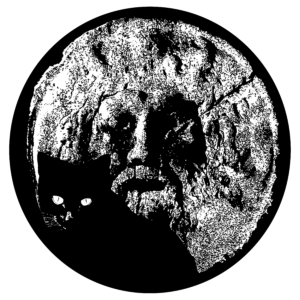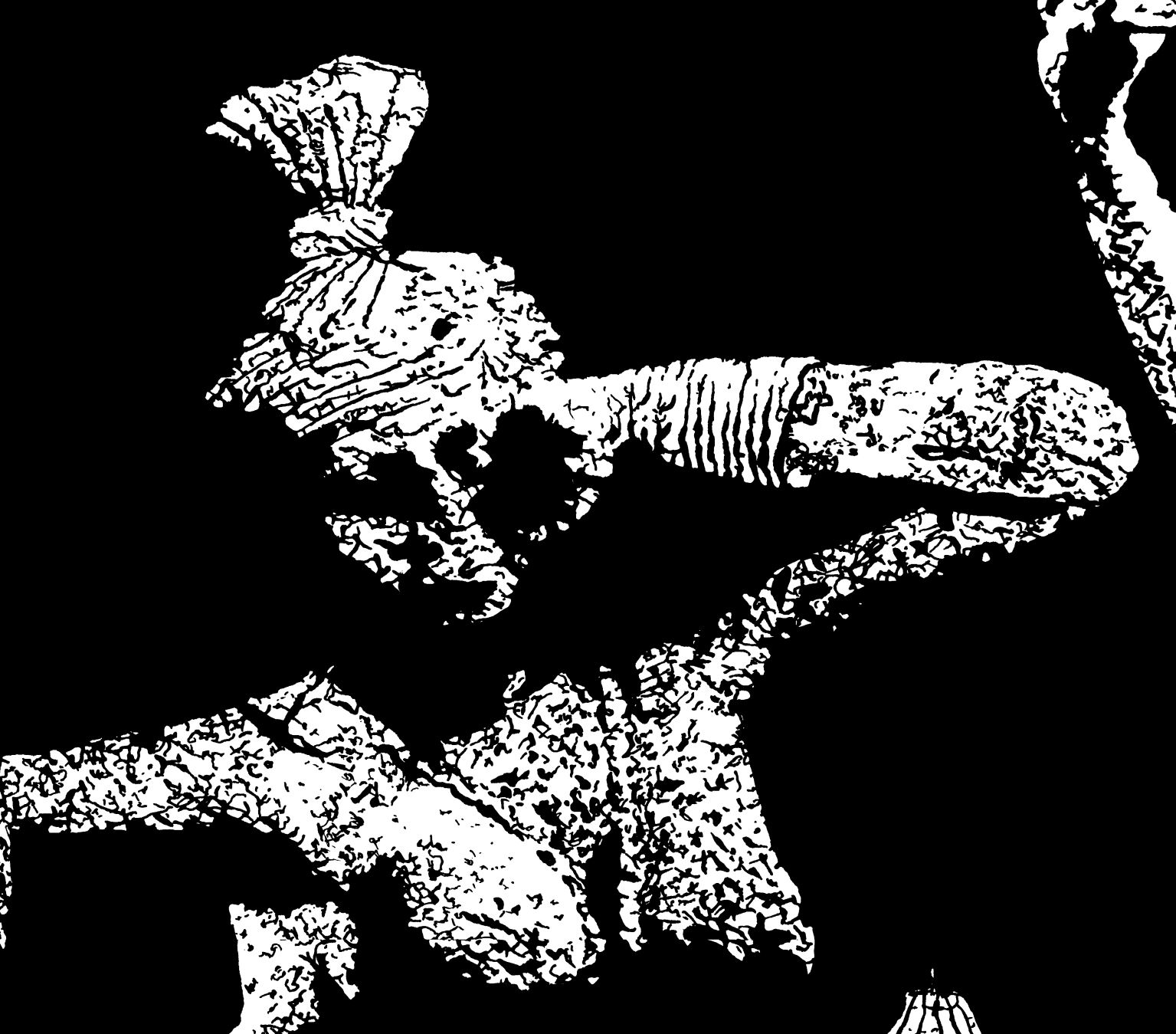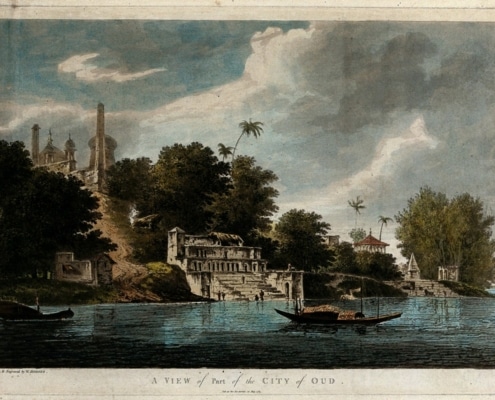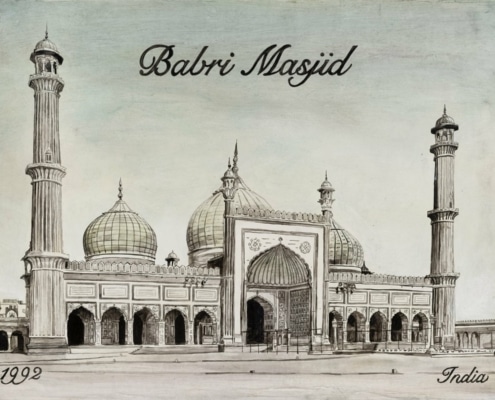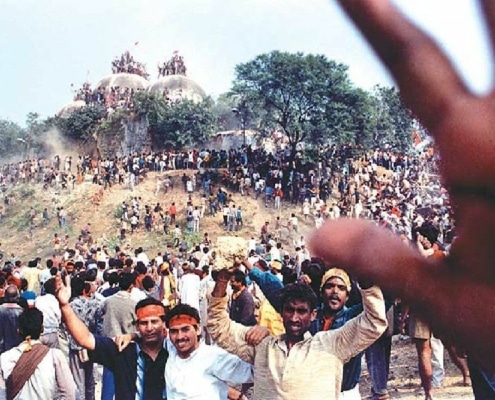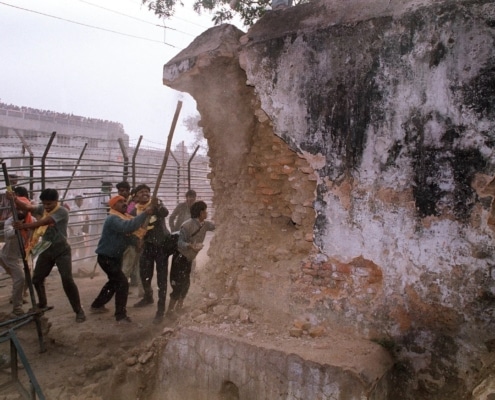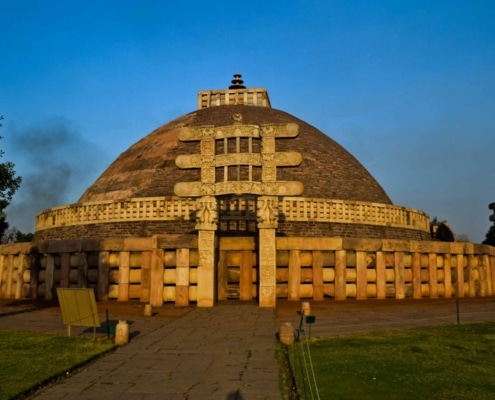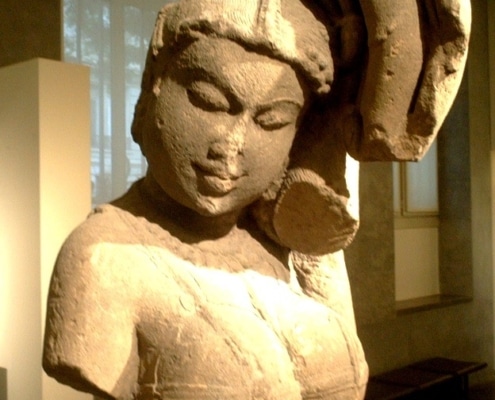“Ayodhya”, Alexandre Mitchell, 2023 (50 x 70 cm, Indian ink)
Violence and hate always surge from religious extremism: the demolition of the Babri mosque of Ayodhya in 1992 led to an endless cycle of violence and the erosion of India’s fundamental communal values and democratic institutions.
The beautiful city of Ayodhya is the perfect illustration of a multi-layered sacred landscape since antiquity. It has witnessed a plethora of interconnected religious pilgrimages to Hindu gods but also includes Buddhist structures, and since at least 1529, an important Muslim presence with the Babri Mosque.
In 1992, this mosque, named after the Mughal emperor Babur, was viciously demolished by a mob of thousands of rioters arguing that it stood on a temple which marked the birthplace of the Hindu god Rama. There was no archaeological basis to prove or disprove this argument at the time but they still went ahead, claiming archaeology was on their side and prepared the riot and future demolition over many months.
All the instigators were members of India’s ruling party and promoted Hindutva – an ideology which emphasises the hegemony of Hindu identity, culture and religion over all other minorities in India. They were also connected to extremist groups like the VHP (Vishwa Hindu Parishad) and the paramilitary RSS (Rashtriya Swayamsevak Sangh). The destruction of the mosque was a turning point for the success of Hindutva ideology in general.
This situation is all the more tragic because the vestiges under the mosque may have been Buddhist, not Hindu. However, no one seriously considered this option since Buddhism was eradicated in India by the Muslim conquest and disappeared completely by the 12th century; Buddhism no longer has a voice, in India. This idea is represented in my drawing in the form of an upside-down stupa. The Buddha Education Foundation of Udit Raj has argued unsuccessfully that the structure excavated by the Archaeological Survey of India in 2003 is a Buddhist stupa destroyed during and after the Muslim invasion of India.
Given the many stupas that were indeed destroyed at the time and the fact that there are many such remains in Ayodhya, as well as written evidence from different periods on the subject, could the destruction and subsequent riots have been avoided thanks to a Buddhist resolution?
In the end and this is what my drawing is truly about, there is only one selfless benevolent being in this group. It is the yakshi, the female nature spirit found in Hindu and Buddhist religious mythologies, associated with the ancient sacred groves of India. This beautiful young woman, a liminal protector, often found in Indian art, associated with the Ashoka tree and depicted as a gatekeeper in Buddhist and Hindu temples. She is a symbol of goodness and fertility throughout the Indian subcontinent, and she is cowering away from the religious frenzy, hate and violence.
General References
Ayodhya (Wikipedia) – Sanchi (Wikipedia) – Stupa (Wikipedia) – Hindutva (Wikipedia) – Lord Ram birthplace (Wikipedia) – Ayodhya dispute or the disputed land (Wikipedia) – Babri Masjid (Wikipedia) – Yakshi (Wikipedia)
Archaeology
“Ayodhya’s sacred landscape: ritual memory, politics and archaeological ‘fact’”, Shaw, J., Cambridge University Press, Jan 15, 2015 | online
Ayodhya archaeology issues (Wikipedia)
Lawsuits
“The Babri Masjid verdict was a dark day for India”, By Rahila Gupta , Friday, 2nd October 2020 | online
“Babri Mosque’s demolition remembered as ‘Black Day’ for Indian democracy, On Dec. 6, 1992, Hindu hardliners demolished 16th century Babri Mosque in northern Indian city of Ayodhya”, Anadolu Agency Staff, Dec 6, 2022 | online
“Buddhist body lays claim to the disputed Ayodhya site”, by Nitish K Singh, Sunday Guardian, Jan 16, 2011. | online
“No, the Supreme Court did not uphold the claim that Babri Masjid was built by demolishing a temple” by Shoaib Daniyal, Nov 11, 2019 | online
